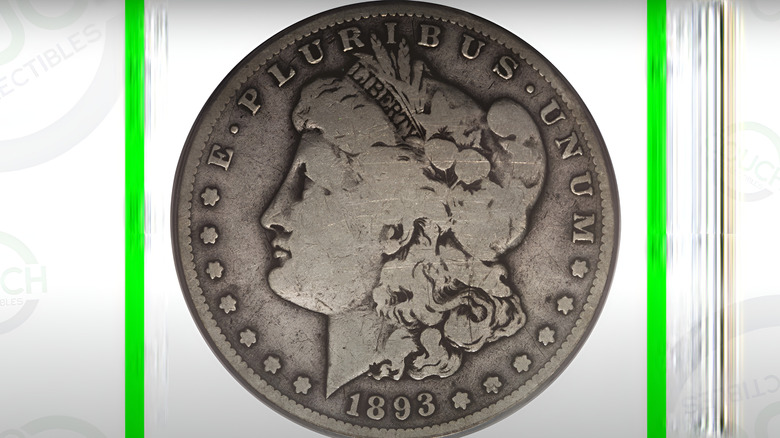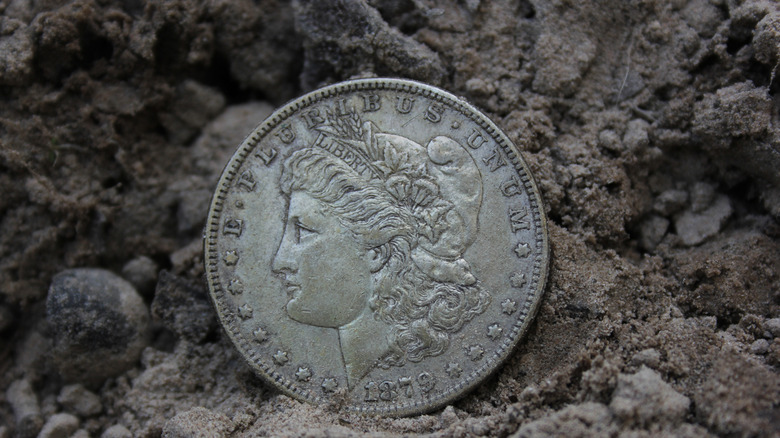A Rare Silver Dollar Coin From 1893 Could Be Worth Up To $2 Million
The 1893-S Morgan silver dollar isn't just any old coin — it is highly sought-after in the business of coin collecting. It has a mix of historical significance, extreme scarcity, and usually carries a hefty price tag. Minted in San Francisco, this coin is tied to a pretty rough patch in American history, the Panic of 1893. This was a time when the U.S. economy hit the brakes hard, messing up industries and railroads while eating into silver reserves.
They were rare, with just 100,000 coins minted, the smallest batch in the series. After the economic meltdown of 1893, the U.S. decided to switch things up and back its currency with gold instead of silver, to stabilize the economy. This meant that silver dollars weren't being made as much, and a bunch of the existing coins got melted down to salvage the silver. Of this original lot, about 2,000 coins survived, making them a collector's prize today.
In addition to its scarcity, the 1893-S Morgan dollar has history. The Panic of 1893 led to the repeal of the Sherman Silver Purchase Act and reinforced the gold standard in U.S. money matters. So, this coin isn't just a collector's item — it marks a major turning point in America's economic story. The fact that an MS-67 grade specimen once sold for $2.1 million shows how the stories can create value in numismatics — a similar pattern to special '25-Cent' coins.
Value of the 1893-S Morgan Silver Dollar
The value of the 1893-S Morgan silver dollar can swing wildly, from a few thousand bucks to over a million, depending on its condition. If you stumble upon one that's rated as "Extremely Fine" (EF-40) or "About Uncirculated" (AU-50), you could be looking at a price tag ranging from $20,000 to $100,000, depending on just how well-preserved it is. And let's not forget the pristine "Mint State" (MS-60 to MS-67) coins — these are also highly prized.
Sure, you might use the historic sale of the PCGS MS-67 for $2.1 million in 2021 to value your coin but that is not how it works. Before you sell any coin, evaluate its value by grading it. Collectors trust grading by reputable services like PCGS or NGC. Grading is vital because buyers worry about overpaying for coins that might have been tampered with; even minor issues like hairlines, signs of cleaning, or rust can slash a coin's value by half.
According to Stack's Bowers and Heritage Auctions, the 1893-S is a "trophy coin," which helps it sell above pre-sale forecasts by institutional buyers with investment portfolios diversifying into tangible assets. While market prices fluctuate, the 1893-S has appreciated for decades and so has most collectible coins. This is why you need to check your spare change, some might be lying there.
What if you have a counterfeit?
Experts warn that up to 30% of ungraded coins could be fakes or have been messed with. To spot these counterfeit coins, third-party grading firms like NGC and PCGS use some high-tech methods, including digital photography, spectroscopy, and magnification. NGC even offers an online tool for detecting counterfeits, which helps collectors compare dodgy coins with ones that are certified legit. It focuses on key details like where the mint mark sits, die fractures, and the texture of the coin's surface.
A counterfeit version of the 1893-S Morgan dollar might fool some with an "S" mint mark to a standard Morgan dollar. However, genuine 1893-S coins have specific mint mark traits that fakes often miss. Counterfeit coins usually show off their flaws with porous surfaces, blurry details, and seams that you can spot along the edges. Another trick is using artificial toning to make a coin look the part. Yet, this often backfires under ultraviolet light, where the uneven or overly bright colors reveal the coin's true deceitful nature.
Collectors would usually ascertain a coin's weight and diameter so, any deviations exceeding 0.1g indicate potential forgery; hence, a basic magnet test is useful, as authentic silver is non-magnetic. Authentic coins possess consistent reeded edges, however counterfeit coins may exhibit irregular grooves. The NGC and PCGS databases catalog known die variants, which they use to verify.


